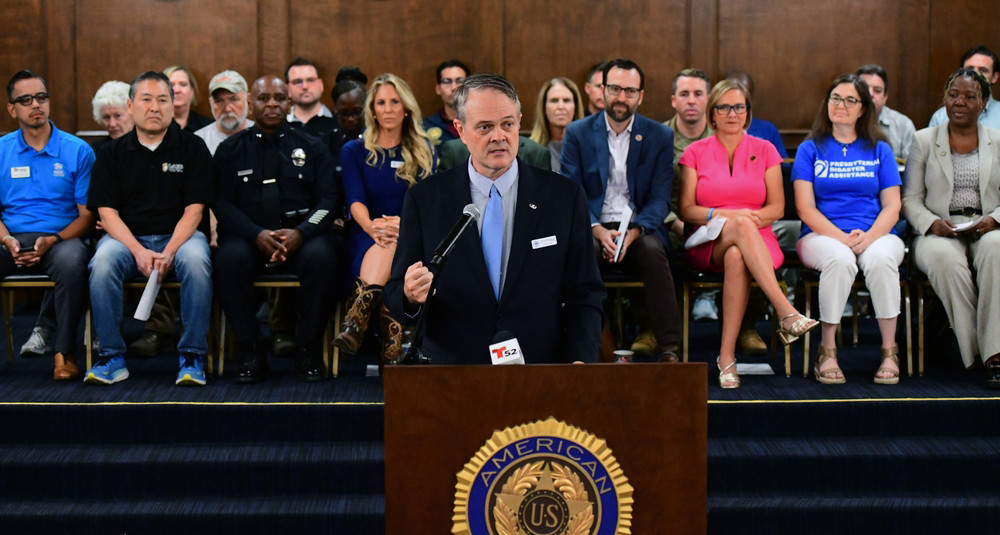
A new Long Term Recovery Group and the National Volunteer Organizations Active in Disaster will connect Palisade fire victims to millions in recovery resources.
American Legion Ronald Reagan Pacific Palisades Post 283 in California withstood the Palisades Fire in early January that destroyed nearly 7,000 structures that included homes, schools, businesses and more. Post 283 became a place of refuge for families affected by the fire by creating the online Palisades Fire Resource Hub and as a disaster response and relief distribution center.
These relief efforts have continued and as a result, Post 283 announced during a press conference on Aug. 8 the formation of a Long Term Recovery Group (LTRG) aligned with the National Volunteer Organizations Active in Disaster (VOAD) to connect Palisade fire victims to millions in recovery and rebuilding resources.
“This is a five to 10-year recovery period where people need information, sometimes they just need a friendly face and a hug,” said Jim Cragg, past Post 283 commander and a member of the LTRG. “These are the things that a Legion hall provides our members on a daily basis, and we’re being asked to amplify that to provide leadership, to provide training and information, to coordinate support for our community. It’s a natural move for us.”
VOAD first connected with Post 283 after seeing its effective disaster response center as a way it could provide additional support to fire victims. VOAD coordinated with the Red Cross and brought in 30 faith-based organizations and nonprofits such as the Salvation Army and Habitat for Humanity into the post for five days where 1,600 families came through for assistance. As more nonprofits wanted to provide disaster relief assistance, VOAD came to Post 283 for a continued relationship.
VOAD voiced that, “You’re the trusted Legionnaires, you’re the trusted veterans in the community, and this is about a position of trust, would you guys be interested in being designated as the official LTRG,” Cragg said.
Now, Post 283’s LTRG is the center for providing education to the 10,000 families who need guidance on how to deal with insurance, rebuilding, toxicity issues and more. LTRG is coordinating communication efforts with the families by working with FEMA and the Army Corps of Engineers. A website also has been created at www.paliltrg.org.
Following the fires, “I’ve had dozens of people talk to me and ask me what I thought we should do,” Cragg said. “Once I say, ‘I’m going to rebuild, and I think our community should rebuild,’ almost every time people took my statement as a direction and said, ‘We’re going to rebuild too.’
“A lot of people could sell their lot and leave. But we’re doing this for our kids. It’s not just us, it’s for our kids, our families, the memories that these kids had and those were stolen from them,” added Cragg, reflecting on what his 10-year-old daughter has experienced from the fire. “So to rebuild the community shows them a strength and it also shows them that their world was not yanked out from under them. It’s still there and that’s important.”
- Emergency

